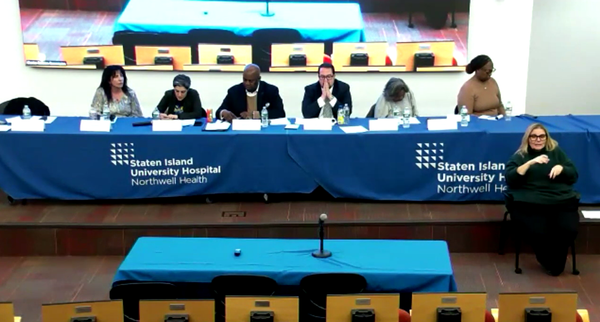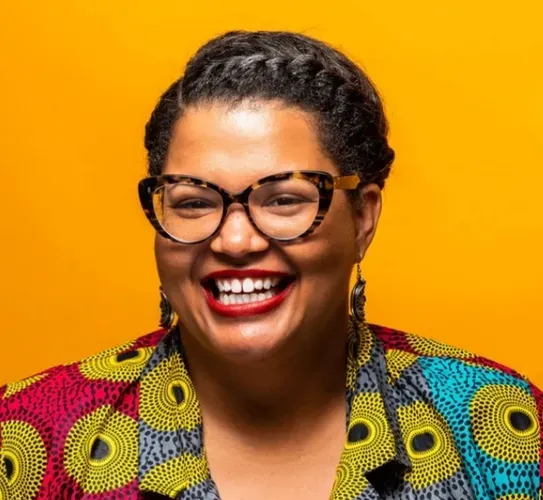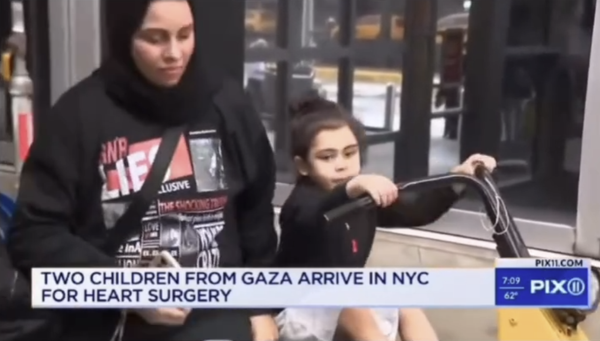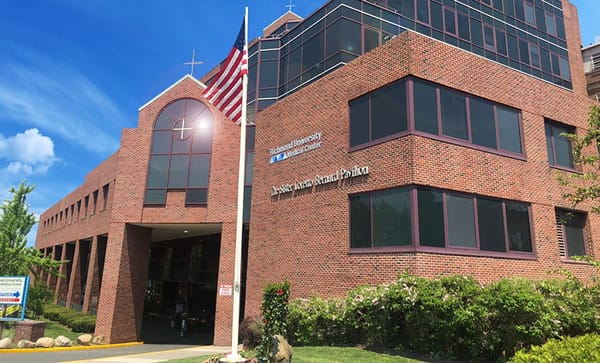Justice or Pacification: One Year After Staten Island's Largest Protests for Racial Justice
A year ago, in response to George Floyd’s murder, Staten Islanders marched for Black lives in some of the largest demonstrations the Island has ever seen.
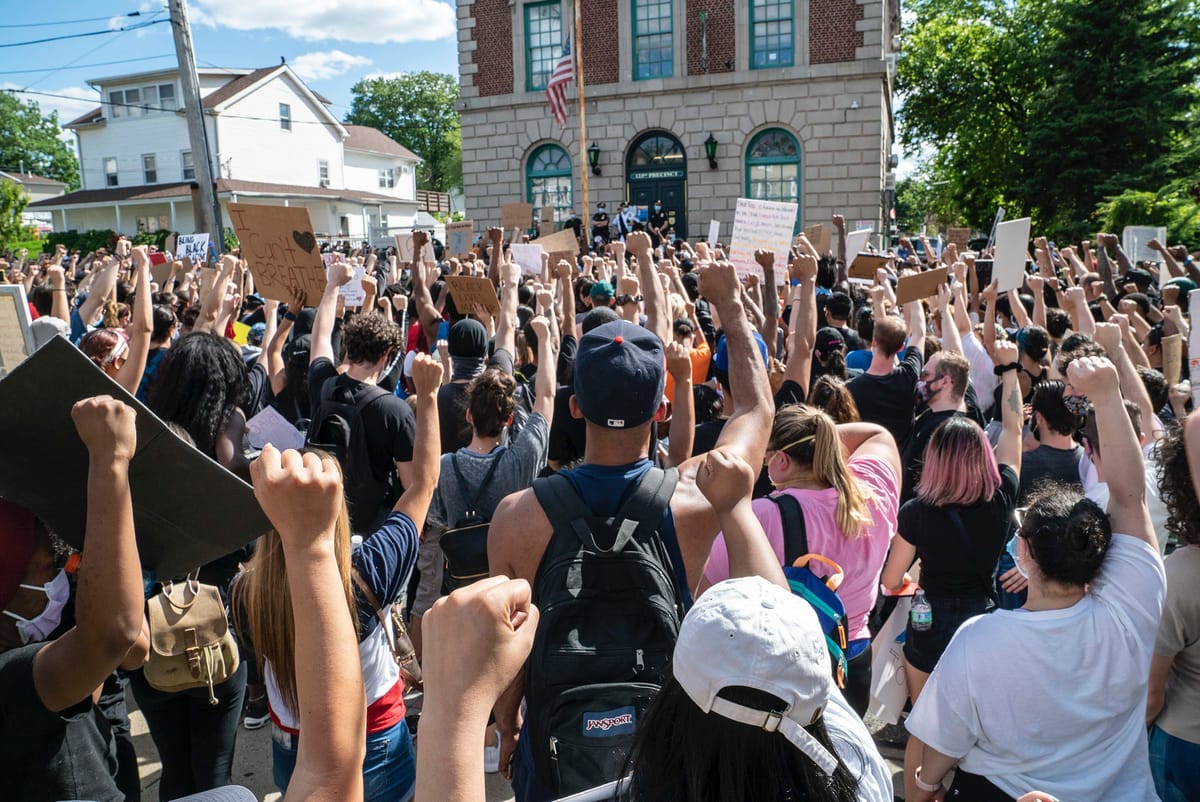
A year ago last week, in response to George Floyd’s murder, Staten Islanders peacefully marched for Black lives in some of the largest demonstrations the Island has ever seen. On June 5, 2020, the South Shore saw almost 2,000 marchers – a mix of Staten Island residents and visitors who came to show solidarity. Five days before, on the North Shore, hundreds began their march in Park Hill where police killed Ernest Sayon in 1994. They passed the site of Eric Garner’s murder and ended their protest at the 120th Precinct on Richmond Terrace.
Both demonstrations featured similar remarks from those in positions of leadership. During the South Shore march, City Council District 49 candidate, Amoy Barnes, delivered a speech thanking the NYPD for their presence and urging protesters to respect the police. She neglected to encourage law enforcement to reciprocate that respect.
Amoy Barnes, 34, who is running for City Council, praises the efforts of organizers and those who attended the protest, and urges equal respect for the NYPD.
— Joseph Ostapiuk (@OstapiukJ) June 7, 2020
“The NYPD is our community.” pic.twitter.com/Sqz1knVIPu
Remarks on the North Shore glossed over police wrongdoing, instead focusing on calling for peace and requesting collaboration with police to “find a solution.”
In the borough where “I can’t breathe” first became a rallying call, the argument that we should peacefully protest and unify with law enforcement was, and is, inapt. It was infuriating to see speakers focus on the possibility of violence from protestors while ignoring the root cause of that violence: continued state-sanctioned murders and assaults on Black people.
The similarities between Eric Garner and George Floyd’s last words affirmed that despite decades of nonviolent organizing, Black life still didn’t matter. This realization pushed record numbers of people to riot last summer. While both rioters and police were, by definition, “violent,” the meaning of the word is vastly different depending on which group it is applied to. Violence for police is deadly force, while violence for protesters is destroying property. Therefore, the popular argument that “rioters are no better than the police they are rioting against” is misleading and problematic. It implies that destroying property causes the same level of harm as ending a Black life. It also ignores that violence began with the state, and, therefore, violence is justified as a form of self defense and revolutionary resistance.
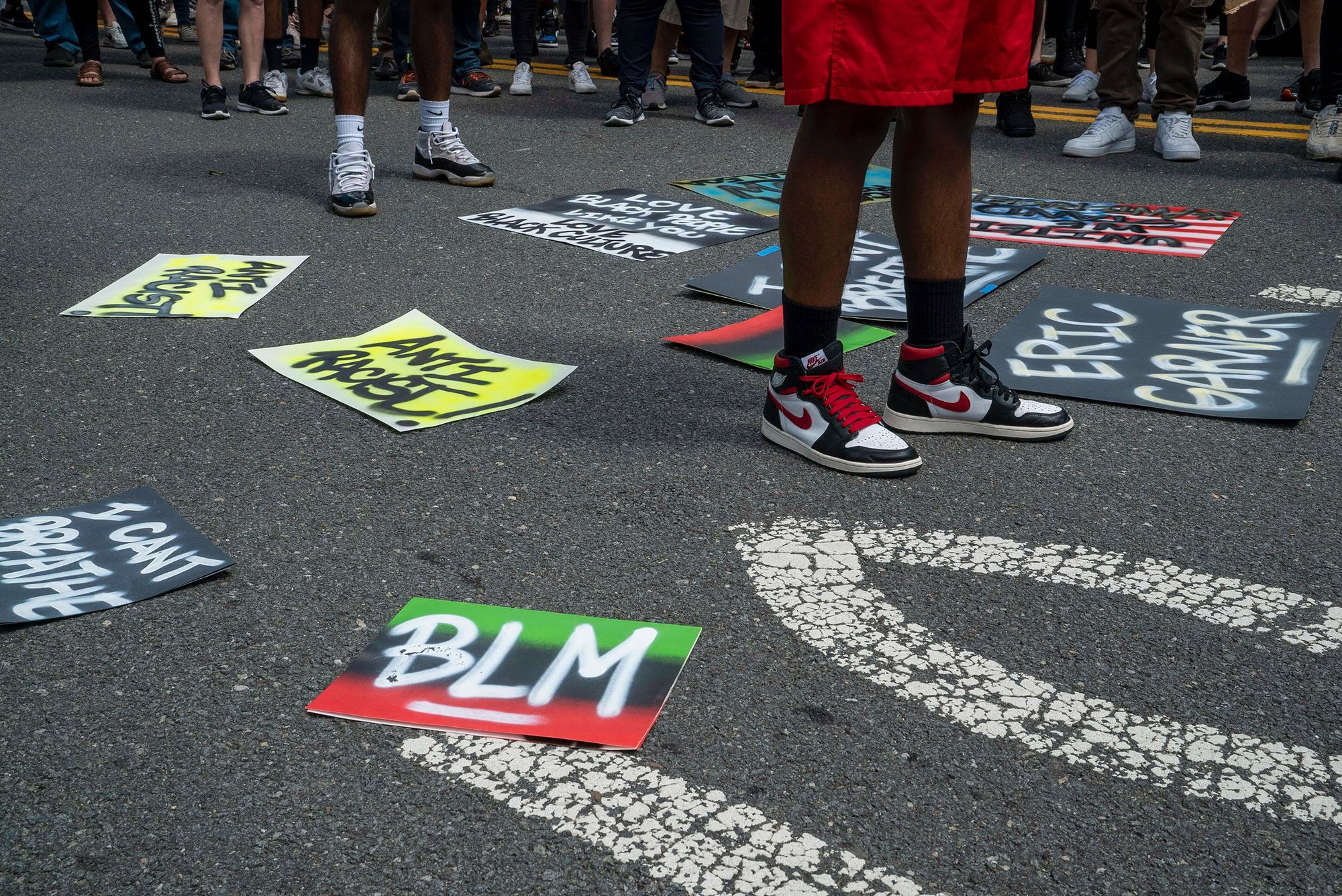
This insistence that Black protesters exclusively use nonviolence, despite its repeated failure to yield justice, calls into question the motive of said insistence. I would argue that framing nonviolence as the only acceptable form of resistance is a tactic used to circumvent outward displays of rage. These displays are considered more egregious than the brutalization and murder we face in this country.
Many organizers tend to choose peace for three main reasons. The most commonly cited reason is a distorted version of Martin Luther King’s message. While King did employ nonviolent forms of resistance, he explicitly defined peace as “the existence of justice for all.” Based on America’s history of indigenous genocide and slavery, justice for all never has and never will exist here. This is evident by the continued displacement of indigenous lands and people, as well as by the repackaging of chattel slavery into wage slavery and the slavery of mass incarceration. Martin Luther King’s idea of peace never will exist under these conditions, so invoking his name to prevent Black people from resisting oppression is disrespectful and contrary to his life’s work.
Aside from bringing up King, adamant nonviolence is also justified by the belief that it will evoke shame in the oppressor. This belief operates on the misconception that racists can feel empathy for people outside of their demographic. It also fails to consider that guilting oppressors into showing mercy to Black people is not an effective, long-term solution. The goal should be to eliminate any tools that have been, or could be, used to violently facilitate the exploitation of Black people and the working class.
The third reason organizers use nonviolence is because their passivity is rewarded. Leadership and power are often given to those who take advantage of political and moral ambiguities by failing to choose a real side. Yes, organizers may be planning the marches and leading the “no justice, no peace” chants, but they have only done so after voiding those words of any meaning. What does “no justice, no peace” mean when you ask the police to escort your marches? What does it mean when you say “no peace” and simultaneously denounce non-peaceful resistance? What does it mean when you take pictures with your fist raised for Black power, but refuse to use it in defense of Black life?
It means you value performance over strategy. It means you value white comfort and approval over your own well-being and the advancement of Black liberation. It means that you – though you call yourself an activist – are subtly upholding white supremacy.
Used both to obstruct righteous rebellions and to evade radical change is the assertion that Black people should align themselves with law enforcement. It stems from the idea that Black people can “change the system from the inside” by becoming cops. While police are disproportionately white, diversifying police departments will not reduce police violence. A study done at Rutgers University revealed that nonwhite officers are just as likely as white cops to use deadly force on Black and Brown people. In fact, the likelihood that nonwhite officers use deadly force on Black and Brown people, specifically, increases further because nonwhite officers are more often assigned to patrol communities of color. Policing's increased interaction with people of color, leading to higher numbers of murders by police, indicates that racism is ingrained into the institution of policing – not just a few “bad apples.” The mere presence of police puts the lives of Black and Brown people at risk.
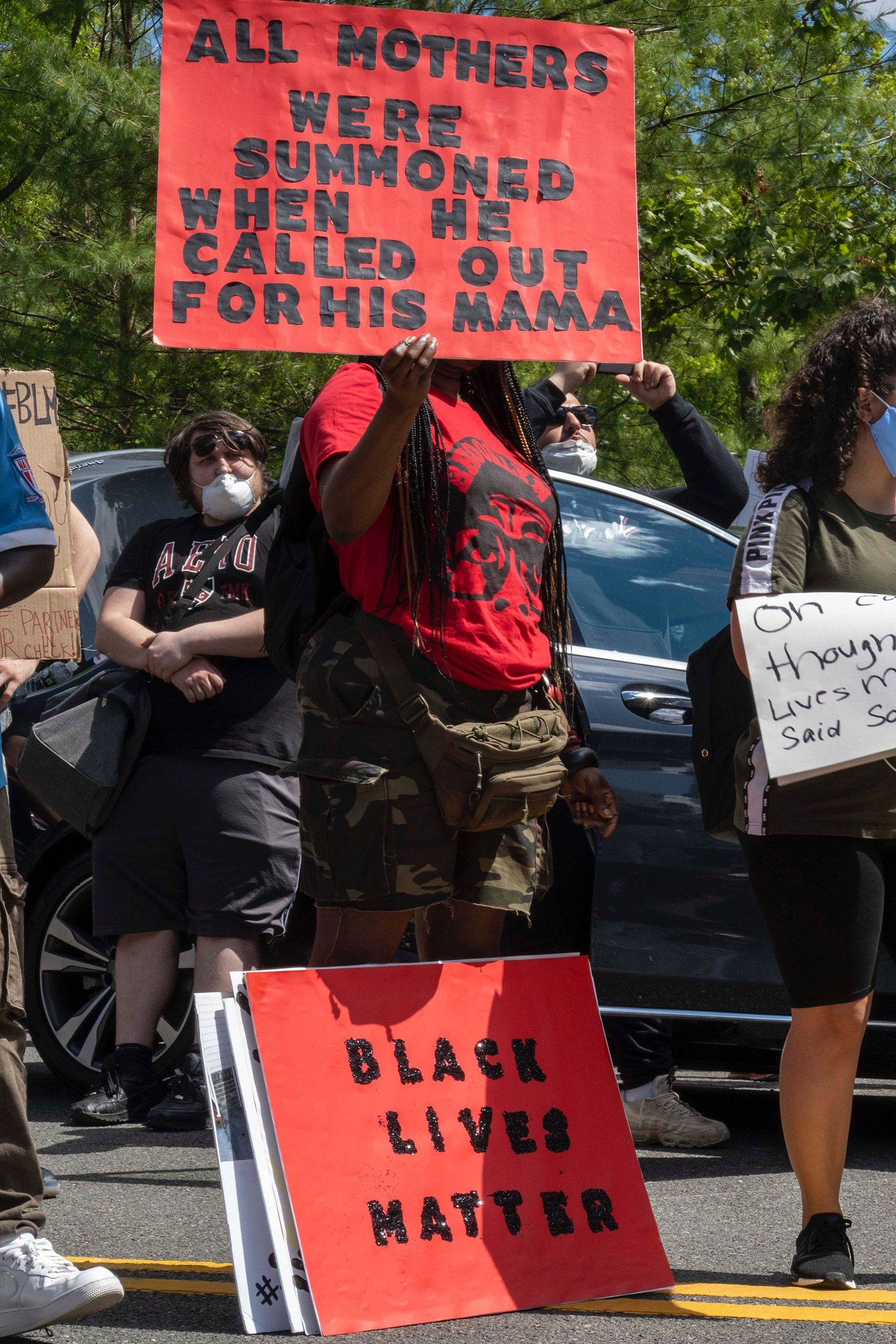
Tokenized nonwhite cops are actually instrumental in creating optics that camouflage the inherently oppressive nature of modern policing. By allowing for Black recruits, police forces can appear inclusive and even sympathetic to the plight of racism. However, it is their job to enable and preserve inequality. At their conception, the police were an oppressive tool of the ruling class. In the South, police emerged from slave patrols meant to keep Black people in check and protect white people from rebellions. In the North, the rich hired thousands of men to impose order on immigrant workers and prevent them from fighting against wage slavery. Today, police still operate to prevent movements of poor and nonwhite people.
With an understanding that police were created to oversee oppressed people, you can see the irony in anyone stating that “we” (police and those protesting policing) need to work together to “find a solution.” It is not in the police’s interests to help the people they have been assigned to control. In addition, to suggest that the solution needs to be “found” is to imply that it is undetected. Had the police actively listened to the protests they were deployed to suppress, they would know the solution is “Hands up, don’t shoot.” In other words, stop the use of injurious and deadly force when dealing with situations that involve Black people. This is not a difficult demand to fulfill. Yet, even after it has echoed through the streets countless times, it has not been put into action.
Attempting to build relationships between the police and communities they have historically subjugated serves to develop inefficient, incremental reforms that continue the police’s racist and classist behavior in a more covert – more effective – way. This is exemplified by the George Floyd Justice in Policing Act which, despite its namesake, wouldn’t have stopped Floyd’s murder. Insultingly, it also invests more money into policing, which has been shown to have little to no effect on crime rates. Protesters have instead advocated for investments in non-punitive, preventative measures to community violence, such as funding social programs and decriminalizing drugs. The prospect of defunding the police to support these programs, however, is seen as too radical and has been shut down multiple times.
The bill does, however, attempt to address police accountability by ending qualified immunity, which saved Eric Garner’s killer, Daniel Pantaleo, from an indictment. An end to qualified immunity, paired with Derek Chauvin’s conviction, could be considered progress and success for the Black Lives Matter Movement. However, it should be noted that convicting Chauvin was likely done to reduce pressure for abolition or reform. Furthermore, the bill is simply virtue signaling as it's unlikely to pass in the Senate without “compromises” that will make it even more inadequate.
This bill would lead to further convictions of cops, but those convictions are the bare minimum. Justice would be acknowledging the presence of, repairing the harm of, and eradicating white supremacy from our institutions. In a 1964 TV interview, Malcolm X stated the following:
“If you stick a knife in my back nine inches and pull it out six inches, there's no progress. If you pull it all the way out, that's not progress. Progress is healing the wound that the blow made. And they haven't even pulled the knife out, much less heal the wound. They won't even admit the knife is there.”
“The knife” here represents white supremacy and the institutions of oppression that have sprung from it. In addition to acknowledging the knife’s presence, recognize that the state put it there purposely and maliciously. Worry more about the damage done by the knife and less about if you consider the way Black people pull the knife out to be respectable. Understand that pulling out the knife completely and healing the wound requires that we abolish and reimagine our current justice system. As long as police murders continue around the country and Black people fear for their lives, there will be no justice and no peace.
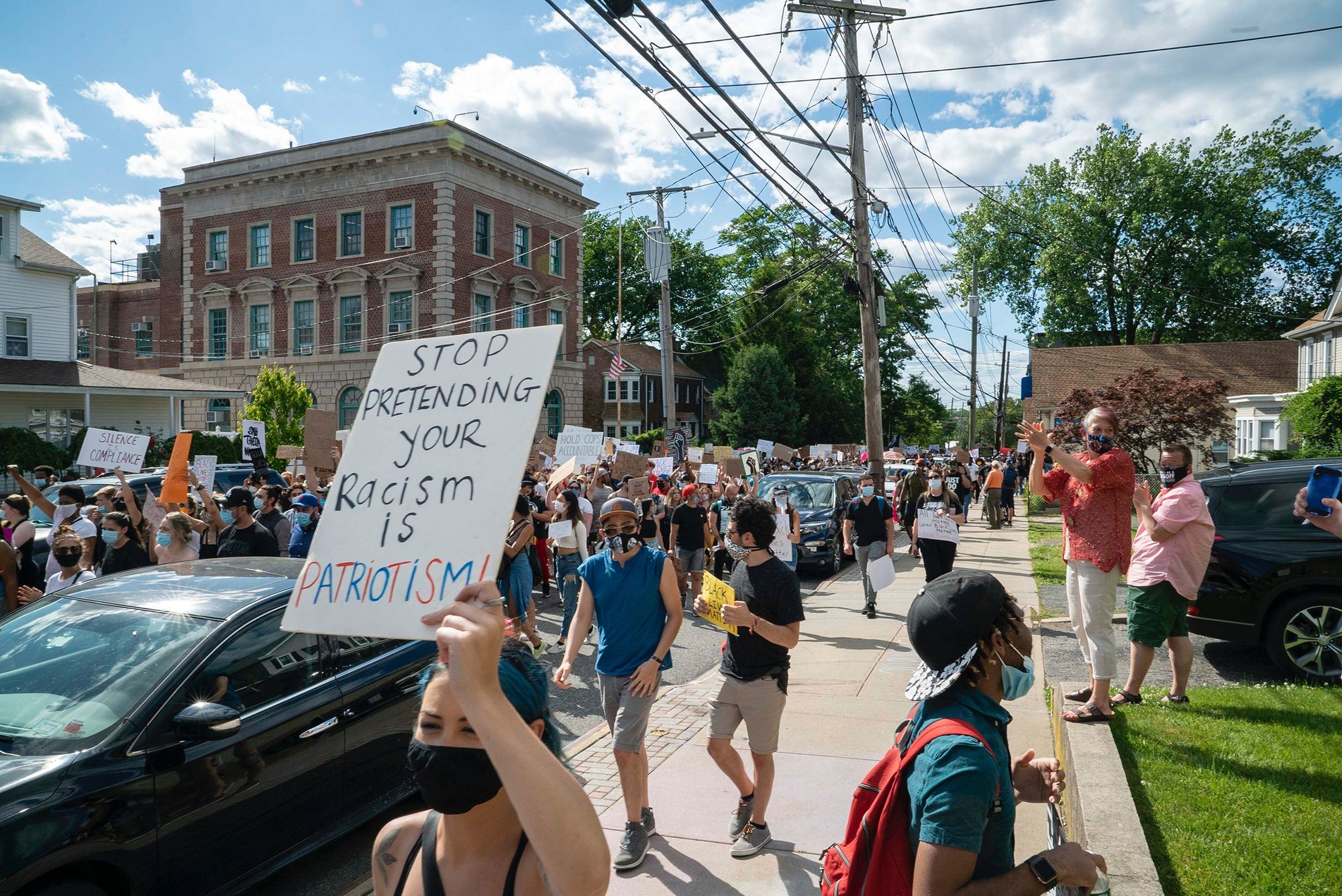
This commentary was written by Zeta, a staff contributor to Plea For The Fifth

